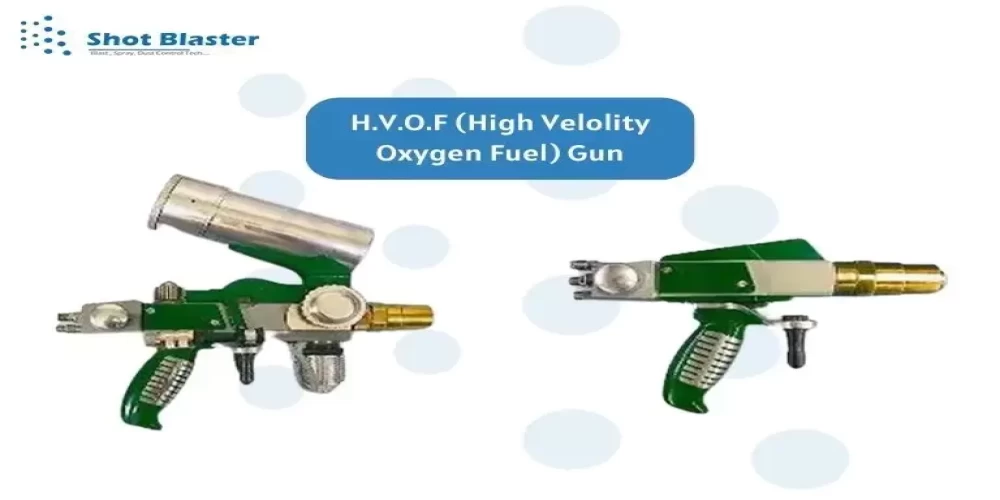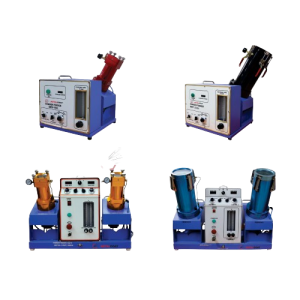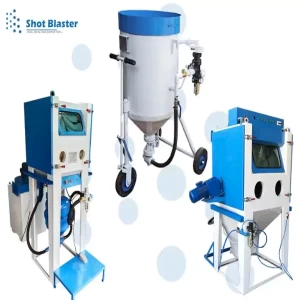Search

HVOF Gun for Industrial Gas Turbines

The coating method known as high-velocity oxygen fuel (HVOF) is used by a number of industries, including the energy and aerospace sectors, notably for coating gas turbine component components. In industries like aviation and power generation, where great reliability and efficiency are vital, gas turbines are frequently utilized.
During the HVOF process, a fuel gas (typically hydrogen or kerosene) is burned with oxygen in a combustion chamber. This causes a flame to start burning, ejecting hot, quickly-moving molten coating material onto the surface of the component being coated. An enhanced mechanical coating with layers that are thick and firmly adhering is produced by combining high particle velocity and extreme heat.
Gas turbine blades and vanes can have their erosion, corrosion, and wear resistance improved via HVOF coatings. This is essential in environments where the turbine is put through difficult conditions, such as those seen in factories or power plants.
Combustion liners can get HVOF coatings to shield them against high-temperature corrosion and wear brought on by the burning process. HVOF coatings can be used to increase the efficiency and erosion resistance of components in the gas turbine's compressor section. These are the sections of the gas turbine that directly interact with the hot gases created during combustion. HVOF coatings can aid in shielding these parts from thermal wear and other types of deterioration. These components can be coated to increase their resistance to corrosion and wear, resulting in a longer service life and less maintenance requirements.
Density of HVOF Coating
High density and low porosity HVOF coatings are renowned for their enhanced corrosion and wear resistance. The danger of delamination is decreased due to the strong adhesion between the coating and the substrate created by the high particle velocity during the coating process. HVOF enables fine-grained control over variables including particle size, velocity, and temperature, which can lead to coatings that are suited for particular purposes. When compared to other thermal spray coating, HVOF coatings are sprayed at comparatively moderate temperatures, which reduces the substrate's heat affected zone. A variety of coating materials, including metals, ceramics, and cermet (ceramic-metal hybrid) materials, may be applied with HVOF.
Due to its capacity to improve component performance, lengthen component lives, and increase overall turbine efficiency and dependability in challenging operating situations, the HVOF coating technique is very important to industrial gas turbines.
Advantages of HVOF Gun for Industrial Gas Turbines
- Industrial gas turbines that employ High-Velocity Oxygen Fuel (HVOF) technology benefit from a number of features that enhance the functionality, effectiveness, and durability of these vital parts.
- Wear may be a major problem for gas turbine parts that work in high-temperature, high-velocity settings, such as turbine blades and vanes. HVOF coatings offer remarkable wear resistance, which lowers these components' wear rates and lengthens their useful lives. The high-speed flow of gases and particles can erode components in industrial gas turbines. HVOF coatings are very good at preventing erosion and maintaining the aerodynamic profiles of turbine blades and other parts.
- As a result of the presence of combustion byproducts and high-temperature gases, turbines frequently operate in corrosive environments. HVOF coatings provide exceptional corrosion resistance, assisting in shielding components from oxidation and chemical assault. Thermal barriers such as HVOF coatings can lessen the amount of heat that hot gases pass to turbine parts. This function reduces thermal loads on components and helps them tolerate high operating temperatures, increasing the turbine's overall longevity and efficiency. Longer intervals between maintenance and replacements are possible because to the improved wear and erosion resistance given by HVOF coatings. This results in less downtime for maintenance, more gas turbine availability, and improved energy production efficiency.
- HVOF coatings may be made to fit a variety of operating needs and component specifications. The performance of gas turbine parts may be adjusted thanks to this modification, which raises the total efficiency and dependability of the turbine. Due to their sometimes intricate shapes, gas turbine parts are difficult to coat using conventional techniques. HVOF coatings can be precisely applied to even complex forms and difficult-to-reach places, assuring uniform coverage.
- Gas turbines may use less fuel as a result of improved efficiency and less wear brought on by HVOF coatings. By reducing fuel usage and pollutants, this results in economic savings as well as advantages for the environment. HVOF coatings' combination of wear, erosion, and corrosion protection significantly increases the operating life of gas turbine components while reducing replacement costs and material waste. Reduced wear and erosion immediately reduce the need for unplanned repairs and replacements as well as maintenance expenses. This helps make the budget for gas turbine maintenance more dependable.
- HVOF coatings indirectly help to cut energy consumption and lessen environmental impact related to production and disposal by increasing efficiency and lowering the need for frequent component replacements. There are a number of benefits that come with using HVOF gun and coatings in industrial gas turbines, which improve their dependability, efficacy, and cost-effectiveness. Since HVOF coatings are specifically designed to satisfy the needs of gas turbine components, they can help produce energy more sustainably and effectively.
All Blogs

